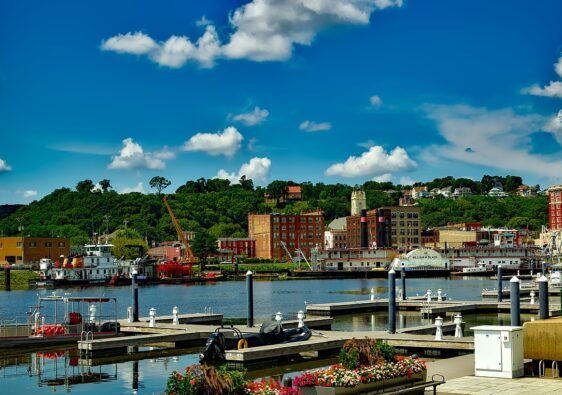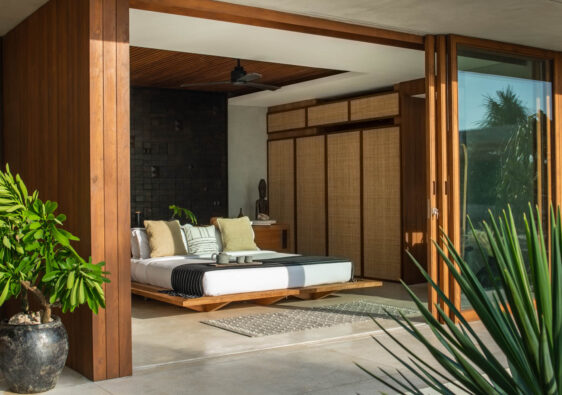In today’s competitive hospitality industry, hotels are no longer just places to sleep—they have evolved into spaces that contribute to the overall experience of a trip. From the moment guests walk through the doors to their departure, every aspect of a hotel’s design plays a role in creating a memorable stay. Whether it’s an upscale luxury resort or Cheap Hotel Suites Orange City, Iowa, hotel design directly impacts guest satisfaction. This article will explore the key components of hotel design and how these elements shape guest experiences, while highlighting the importance of a well-thought-out design in hotels near Orange City, Iowa.
1. The Importance of First Impressions: Hotel Exteriors and Lobbies
The first interaction guests have with a hotel sets the tone for their entire stay, and the exterior design and lobby area play a crucial role in making this first impression memorable.
a. Hotel Exteriors: Welcoming and Inviting
As guests approach a hotel, the exterior should communicate the brand’s identity and the level of service they can expect. Whether it’s a towering high-rise or a quaint countryside inn, the design should be welcoming, with well-maintained facades, landscaping, and signage. Hotels near Orange City, Iowa, for instance, often incorporate local architectural elements or natural surroundings, creating a sense of place that can make a property feel more authentic and connected to its environment.
Curb Appeal: Features such as clean walkways, attractive lighting, and greenery can create a welcoming entrance, even for cheap hotel suites in Orange City, Iowa. The goal is to ensure that the exterior looks inviting and well-kept, giving guests the impression that care and thought have been put into the entire property.
b. Lobby Design: The First Point of Connection
The hotel lobby is not just a space where guests check-in, but a gathering area where first interactions occur. The design of this space is vital because it sets the tone for the entire hotel experience. Lobbies often serve multiple functions, from being a place to socialize to providing areas for work or relaxation.
Flow and Functionality: Lobbies should be designed with a flow that allows guests to move easily from check-in to elevators or common areas. Thoughtful signage, comfortable seating, and accessible information desks contribute to a stress-free experience.
Aesthetics and Atmosphere: Lighting, artwork, and décor should all reflect the hotel’s branding, creating an atmosphere that resonates with the target audience. For example, hotels that cater to families might have a bright and cheerful design, while boutique hotels may focus on modern, minimalist aesthetics that appeal to business travelers.
Hotels near Orange City, Iowa, often reflect the charm and warmth of the local culture through lobby designs that incorporate local artwork, natural wood finishes, and soothing colors. Even cheap hotel suites can create memorable experiences by thoughtfully designing their public spaces to feel welcoming and homely.
2. Guest Rooms: Comfort and Personalization
Guest rooms are the heart of any hotel experience. They provide guests with a private space to relax, work, or sleep, and their design must balance comfort, functionality, and aesthetics.
a. Creating a Comfortable Environment
At the core of any hotel stay is the desire for comfort. Whether it’s cheap hotel suites in Orange City, Iowa, or high-end luxury hotels, the quality of the beds, linens, and furniture should be prioritized. Soft lighting, comfortable bedding, and ergonomic furniture ensure that guests can relax and recharge during their stay.
The Role of the Bed: The bed is often the centerpiece of any hotel room. High-quality mattresses, clean and crisp linens, and ample pillows contribute to a good night’s sleep. Even budget-friendly hotels near Orange City, Iowa, can enhance their guests’ experiences by focusing on these key comfort elements.
Climate Control and Soundproofing: Ensuring that guests have control over room temperature and are protected from outside noise is essential in providing a restful environment. Soundproofing walls, high-quality windows, and customizable air conditioning or heating systems can significantly impact how comfortable a room feels.
b. Personalization Through Design
In addition to comfort, today’s travelers are looking for personalized experiences that feel unique. Modern hotel design incorporates technology and thoughtful details to cater to the specific needs and preferences of guests.
Technology Integration: Smart room controls, such as the ability to adjust lighting, temperature, or curtains with a tablet or smartphone, enhance the guest experience. Hotels near Orange City, Iowa, can also offer personalized entertainment options like streaming services or Bluetooth speakers, allowing guests to feel more at home.
Décor That Tells a Story: The design of the room should reflect the hotel’s theme or location. For example, hotels in Iowa can showcase local craftsmanship, rural landscapes, or farming heritage through artwork, textiles, and color schemes. This creates a sense of place that resonates with travelers, making the experience more memorable.
3. Common Areas: Spaces to Socialize, Work, and Unwind
Hotels are no longer just a place to sleep; guests also expect spaces where they can socialize, work, and relax outside of their rooms. The design of common areas—such as lounges, meeting rooms, and outdoor spaces—adds to the overall guest experience by offering a variety of environments that cater to different activities.
a. Lounges and Social Spaces
Communal areas like lounges, bars, and lobbies serve as important social hubs for guests. These spaces should be designed to encourage conversation and relaxation.
Flexible Seating Arrangements: Lounge areas should offer different types of seating, from cozy armchairs for quiet reading to communal tables where guests can socialize or work together. The design should be versatile enough to accommodate different uses throughout the day.
Ambiance and Atmosphere: Lighting, music, and décor can help create an inviting atmosphere. For example, hotels near Orange City, Iowa, might use soft, warm lighting and natural materials to create a homey, intimate feel in their common spaces.
b. Business and Meeting Spaces
For business travelers, functional meeting rooms or co-working spaces are essential. These areas should be equipped with modern technology—such as Wi-Fi, projectors, and comfortable seating—so guests can work efficiently.
Multi-Functional Spaces: Business areas can be designed to serve multiple purposes, from private meetings to casual work sessions. The design should prioritize both privacy and collaboration, depending on the needs of the guests.
c. Outdoor Spaces
If the hotel has outdoor areas—such as terraces, gardens, or pools—these should be designed to complement the hotel’s overall aesthetic while providing a relaxing retreat for guests.
Nature-Inspired Designs: Using local flora, natural materials, and outdoor furniture that blends with the landscape can create a serene, comfortable atmosphere. In Iowa, for instance, outdoor spaces might offer views of rolling farmlands or rural landscapes, enhancing the guest’s connection to the location.
4. Dining and Wellness: Enhancing the Hotel Experience
Dining areas and wellness facilities, such as spas and gyms, play a significant role in creating a memorable hotel experience. These spaces should feel luxurious and cater to the well-being of the guests.
a. Dining Spaces: Function and Aesthetic
Whether it’s an on-site restaurant or a breakfast buffet area, the design of dining spaces should promote a pleasant and comfortable dining experience. Hotels can enhance the ambiance through thoughtful layout, lighting, and décor.
Layout for Comfort: Dining areas should be spacious, with seating arrangements that offer both privacy and social interaction. Guests should feel at ease whether they’re dining alone or with a group.
b. Wellness and Fitness Facilities
More travelers today are prioritizing health and wellness during their stays. Hotels that offer well-designed gyms, spas, and wellness programs attract guests looking for relaxation and rejuvenation.
Spa and Relaxation Areas: If the hotel offers a spa, the design should focus on creating a calming atmosphere, using soothing colors, natural materials, and ambient lighting.
Fitness Rooms: Fitness rooms should be equipped with modern equipment and designed with large windows for natural light, making the space feel inviting and motivating.
5. The Future of Hotel Design: Sustainable and Green Design
Sustainability is becoming increasingly important in hotel design. Many travelers today prefer eco-friendly hotels that prioritize sustainable practices in both their operations and design.
a. Energy-Efficient Designs
Hotels are adopting energy-efficient lighting, HVAC systems, and renewable energy sources, such as solar panels, to reduce their carbon footprint. Guests are also more conscious of water and energy usage during their stay, making eco-friendly hotels more appealing.
b. Use of Sustainable Materials
Incorporating sustainable building materials, such as reclaimed wood or recycled materials, is another way hotels are reducing their environmental impact. Hotels can also design rooms with minimalistic, yet functional, furniture to avoid waste and promote simplicity.
Conclusion
The role of hotel design goes beyond aesthetics; it directly impacts how guests perceive their stay and influences their comfort and satisfaction. Whether it’s cheap hotel suites in Orange City, Iowa, or luxury accommodations, thoughtful design that prioritizes guest comfort, functionality, and personalization creates a memorable experience. With the growing focus on sustainability and wellness, hotels near Orange City, Iowa, can attract travelers by adopting designs that are not only beautiful but also environmentally conscious and guest-centered. The result is a stay that guests will remember long after they’ve checked out.



